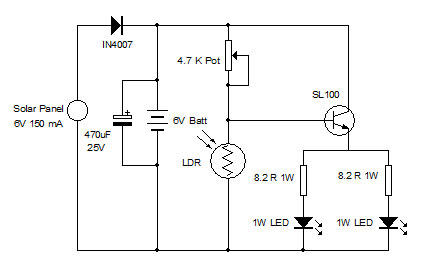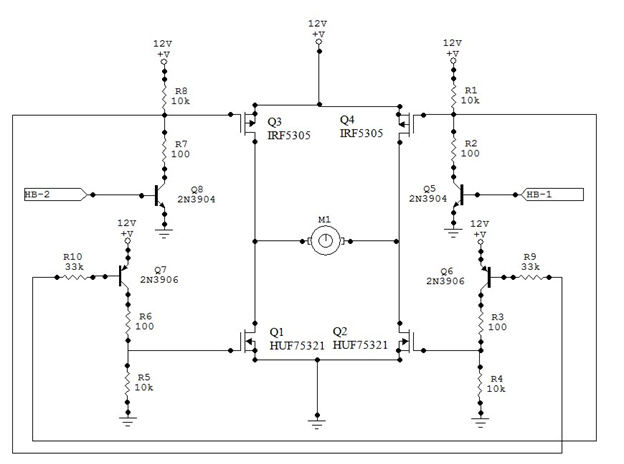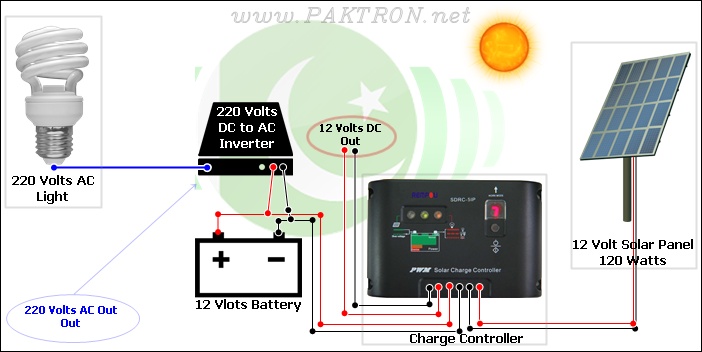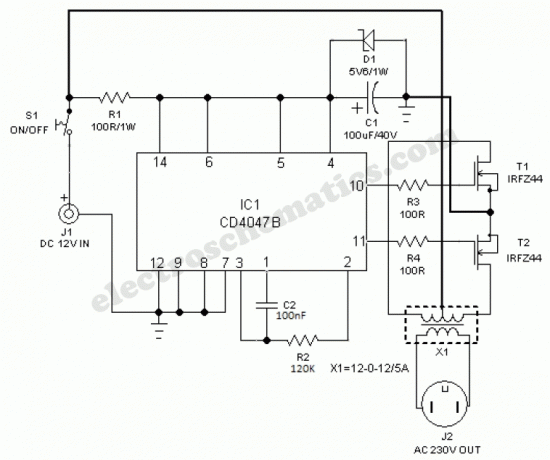
Solar Engine
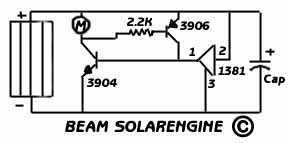
Well the most common use is in a solaroller which is a small wheeled car that charges up and then moves in a quick burst of speed. Since you can only use motors and coils with this circuit robots built with this circuit are mainly mechanical such as my artistic butterflies. One other common use is a little thing called a symet which can roam around and not get stuck using only one motor. More: Choosing the right size capacitor First you need to think about what your application is. Do you want the motor to spin for a long time or just a few turns? If you want it to spin for a long time then your going to need a bigger capacitor. I mean bigger.
The described circuit is primarily utilized in applications such as solar-powered vehicles, specifically the solaroller, which is a compact wheeled car designed to harness solar energy for movement. The solaroller operates by charging a capacitor through solar panels, allowing it to store energy and release it in a quick burst to propel the vehicle forward. This mechanism is crucial for achieving short, rapid movements, making it suitable for educational purposes and introductory robotics.
In the context of constructing robots, the circuit is limited to the use of motors and coils, which aligns with the design of mechanical robots, such as artistic butterflies. These robots are typically designed to exhibit simple movements, relying on the energy stored in the capacitor to drive the motors. The choice of motor is critical, as it must be compatible with the voltage and current output of the capacitor to ensure efficient operation.
Another application mentioned is the symet, a small robotic device capable of navigating its environment without becoming stuck, achieved through the use of a single motor. This design simplicity allows for more straightforward control mechanisms and reduces the complexity of the circuit. The reliance on a single motor is an efficient design choice, as it minimizes the number of components and potential points of failure.
When selecting capacitors for these applications, it is essential to consider the desired duration of motor operation. A larger capacitor will store more energy, allowing the motor to run for an extended period. Conversely, a smaller capacitor may be adequate for applications requiring only brief bursts of energy. The selection process should take into account the specific requirements of the application, including the load on the motor and the expected duration of operation. Proper sizing of the capacitor is critical to achieving optimal performance of the circuit in both the solaroller and other robotic applications.Well the most common use is in a solaroller which is a small wheeled car that charges up and then moves in a quick burst of speed. Since you can only use motors and coils with this circuit robots built with this circuit are mainly mechanical such as my artistic butterflies.
One other common use is a little thing called a symet which can roam around and not get stuck using only one motor. Choosing the right size capacitor First you need to think about what your application is. Do you want the motor to spin for a long time or just a a few turns? If you want it to spin for a long time then your going to need a bigger capacitor. I mean bigger 🔗 External reference
The described circuit is primarily utilized in applications such as solar-powered vehicles, specifically the solaroller, which is a compact wheeled car designed to harness solar energy for movement. The solaroller operates by charging a capacitor through solar panels, allowing it to store energy and release it in a quick burst to propel the vehicle forward. This mechanism is crucial for achieving short, rapid movements, making it suitable for educational purposes and introductory robotics.
In the context of constructing robots, the circuit is limited to the use of motors and coils, which aligns with the design of mechanical robots, such as artistic butterflies. These robots are typically designed to exhibit simple movements, relying on the energy stored in the capacitor to drive the motors. The choice of motor is critical, as it must be compatible with the voltage and current output of the capacitor to ensure efficient operation.
Another application mentioned is the symet, a small robotic device capable of navigating its environment without becoming stuck, achieved through the use of a single motor. This design simplicity allows for more straightforward control mechanisms and reduces the complexity of the circuit. The reliance on a single motor is an efficient design choice, as it minimizes the number of components and potential points of failure.
When selecting capacitors for these applications, it is essential to consider the desired duration of motor operation. A larger capacitor will store more energy, allowing the motor to run for an extended period. Conversely, a smaller capacitor may be adequate for applications requiring only brief bursts of energy. The selection process should take into account the specific requirements of the application, including the load on the motor and the expected duration of operation. Proper sizing of the capacitor is critical to achieving optimal performance of the circuit in both the solaroller and other robotic applications.Well the most common use is in a solaroller which is a small wheeled car that charges up and then moves in a quick burst of speed. Since you can only use motors and coils with this circuit robots built with this circuit are mainly mechanical such as my artistic butterflies.
One other common use is a little thing called a symet which can roam around and not get stuck using only one motor. Choosing the right size capacitor First you need to think about what your application is. Do you want the motor to spin for a long time or just a a few turns? If you want it to spin for a long time then your going to need a bigger capacitor. I mean bigger 🔗 External reference
